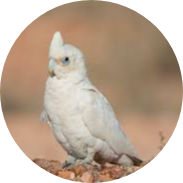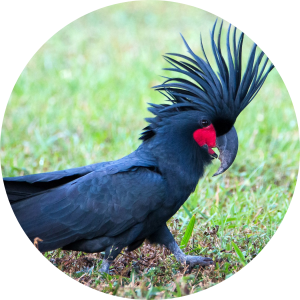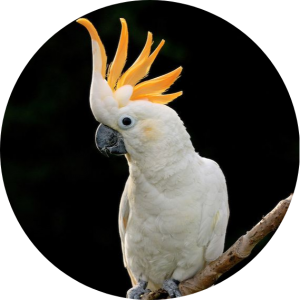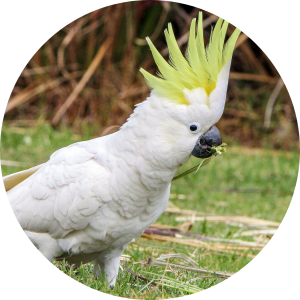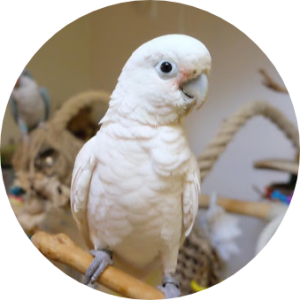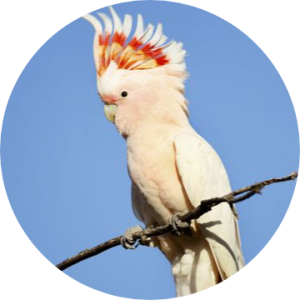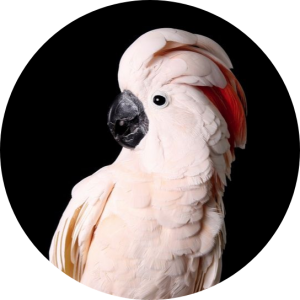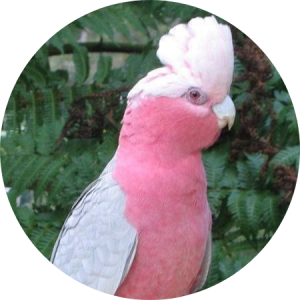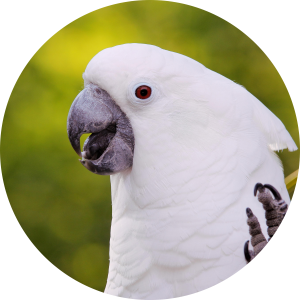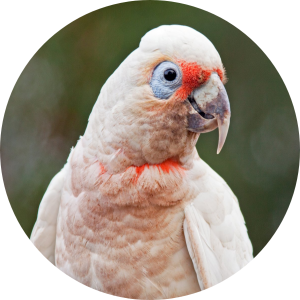Cockatoo Information, Guide & Care
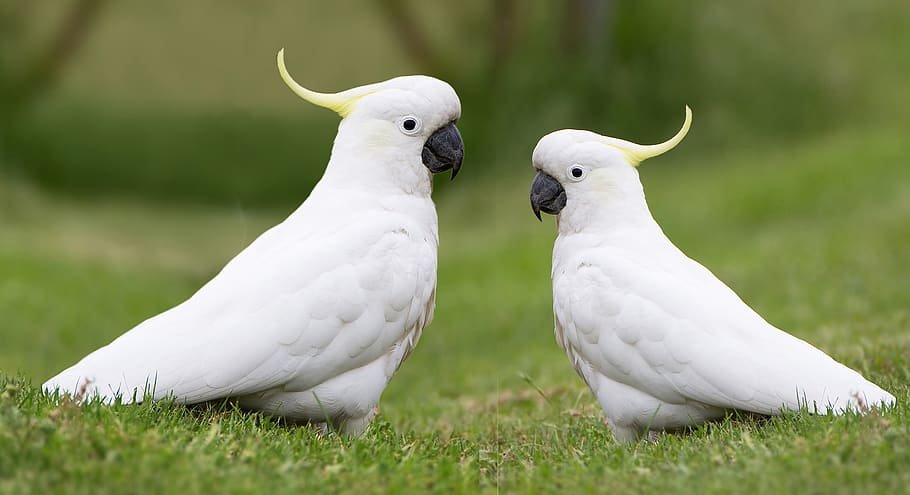
ABOUT COCKATOO PARROT
Description:
A cockatoo is any of the 21 parrot species belonging to the family Cacatuidae, the only family in the superfamily Cacatuoidea. Along with the Psittacoidea and the Strigopoidea, they make up the order Psittaciformes.
Habitat:
 Cockatoos have a much more restricted range than the true parrots, occurring naturally only in Australia, Indonesia, the Philippines, and some Pacific regions. Eleven of the 21 species exist in the wild only in Australia, while seven species occur only in the islands of the Philippines, Indonesia, Papua New Guinea and the Solomon Islands. No cockatoo species are found in Borneo, despite their presence on nearby Palawan and Sulawesi or many Pacific islands, although fossil remains have been recorded from New Caledonia.
Cockatoos have a much more restricted range than the true parrots, occurring naturally only in Australia, Indonesia, the Philippines, and some Pacific regions. Eleven of the 21 species exist in the wild only in Australia, while seven species occur only in the islands of the Philippines, Indonesia, Papua New Guinea and the Solomon Islands. No cockatoo species are found in Borneo, despite their presence on nearby Palawan and Sulawesi or many Pacific islands, although fossil remains have been recorded from New Caledonia.
Three species occur in both New Guinea and Australia. Some species have widespread distributions, with the galah, for example, occurring over most of Australia, whereas other species have tiny distributions, confined to a small part of the continent, such as the Baudin’s black cockatoo of Western Australia or to a small island group, such as the Tanimbar corella, which is restricted to the Tanimbar Islands of Indonesia. Some cockatoos have been introduced accidentally to areas outside their natural range such as New Zealand, Singapore, and Palau, while two Australian corella species have been introduced to parts of the continent where they are not native.
Care & Feeding:
A cockatoo needs a well-constructed cage to not only prevent it from escaping but to prevent the bird from destroying it. A pet cockatoo will need a steady supply of appropriate items to chew and destroy. Cockatoos tend to be needier than other pet parrot species and an owner should set boundaries early on, otherwise the bird might scream for attention. A cockatoo new to the home should not be showered with non-stop attention, but rather given toys and other enrichment opportunities as well as intermittent attention so that the bird learns to keep itself entertained when the people in its life are not able to offer one-on-one time.
Food for cockatoos should be nutritious, but should also include a foraging element as well. Cockatoos are fun-loving, intelligent and energetic parrots, and their food should reflect those traits. Wild cockatoos forage all day for seeds and nuts, as well as coconuts and grain crops. Like all companion parrots, cockatoos do not thrive on birdseed alone. Cockatoo food shouldn’t be boring to eat, either, and will love foods like Avi-Cakes, Pellet-Berries, Nutri-Berries, and Premium Daily Diet Pellets.
Breeding:
If you want to breed your cockatoo, make sure they are mature and healthy. Breeding birds need to bond and get use to their surroundings. The birds must be well fed and their new spacious cage must be clean.
Most cockatoos breed well in captivity, but some species do not. In North America, the predominant breeding season is winter and spring, although some pairs may produce year round. Breeding age can be as young as three years, but hand-reared birds may not begin breeding before they are 8 to 10 years old, especially hand-fed males. The breeding life span of most cockatoos is not precisely known but is possibly up to 30-plus years.
The breeding cage should be large enough to allow some limited flight between perches. One inch by one inch 12-gauge welded wire is a good choice for cage construction. A suggested size is 4 feet wide by 4 feet tall by 8 feet long suspended 4 feet above the ground or floor.
Male cockatoos may become aggressive toward their mates. Fatal attacks may occur in which the male bird severely bites the face, wings, and legs of the female. Clipping the wings of the male prior to the breeding season will help the female to escape in case the male becomes aggressive. Aggressive behavior may occur in compatible breeding pairs.
Nest Boxes:
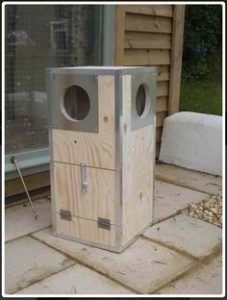 Double-entrance nest boxes are often used to reduce the chance of the male trapping the female in the box. Large wooden boxes can be used; size should be approximately 18 inches by 18 inches by 24 inches. Metal barrels, plastic pickle barrels and garbage cans can also be used. Grandfather-style wooden boxes can be used for certain cockatoo species since some species like a deep, narrow nest. Size should be approximately 12 inches by 12 inches by 24 inches or 12 inches by 12 inches by 36 inches. The size of the nest box will vary depending on the size of the adult bird.
Double-entrance nest boxes are often used to reduce the chance of the male trapping the female in the box. Large wooden boxes can be used; size should be approximately 18 inches by 18 inches by 24 inches. Metal barrels, plastic pickle barrels and garbage cans can also be used. Grandfather-style wooden boxes can be used for certain cockatoo species since some species like a deep, narrow nest. Size should be approximately 12 inches by 12 inches by 24 inches or 12 inches by 12 inches by 36 inches. The size of the nest box will vary depending on the size of the adult bird.
Care of Chicks:
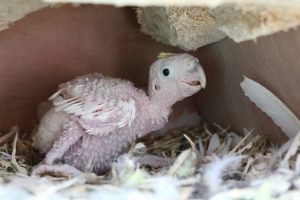 You will need to check the nesting box every day to make sure the chicks are being fed properly. Offer fresh food and plenty of water daily. If the parents care for their young, you will not have to worry too much. However, first time or inexperienced parents may not care for their young, and you have to care for them.
You will need to check the nesting box every day to make sure the chicks are being fed properly. Offer fresh food and plenty of water daily. If the parents care for their young, you will not have to worry too much. However, first time or inexperienced parents may not care for their young, and you have to care for them.
Hand-rearing chicks takes time and the right equipment. You may need to place them in an incubator and hand feed them every 2 hours (commercial diets are available, to which you just add water). The feeding technique is not difficult to learn, but you should have your avian veterinarian show you how to do it properly. This is a critical period in the life of the new birds and it is during this time you may encounter a high rate of complications and mortality.
Cockatoo Price:
price of cockatoo range – $800-$4,000+
TYPES OF COCKATOO
